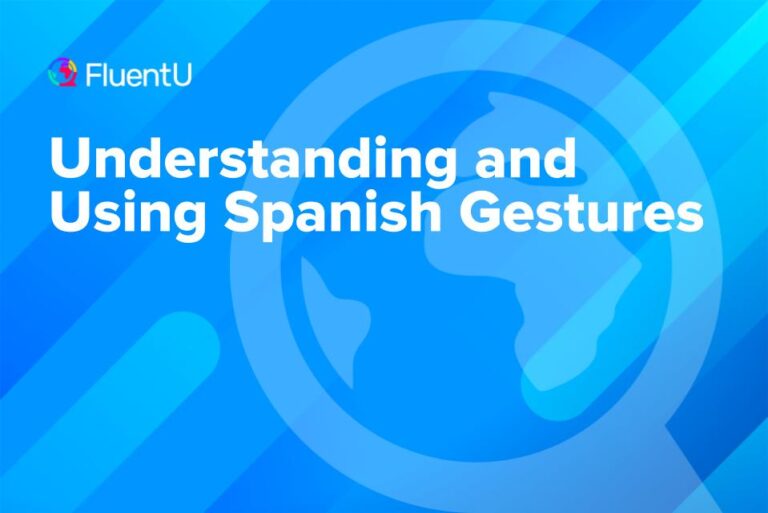Spanish Accent Rules (With Examples)

I still remember seeing a big, red strike through my handwritten answer “el exámen” on my Spanish vocab test. “There’s only an accent when it’s plural,” my teacher told me.
I was frustrated, and Spanish accents continued to perplex me until a few years later when I finally learned that accent marks in Spanish follow rules. Let me now teach you everything you need to know about Spanish accent rules.
Download: This blog post is available as a convenient and portable PDF that you can take anywhere. Click here to get a copy. (Download)
Spanish Stress Rules
Two basic rules in Spanish tell us where to put the stress of a word. Stress is important, as it can sometimes be the only way to distinguish two words.
It’s the difference between “insult” (IN-sult), as in “I couldn’t think of a good insult,” and “insult” (in-SULT), as in “She’s going to insult me now.”
The two rules are simple:
1. For words ending in a vowel, n or s, spoken stress is on the second-to-last syllable. For example:
2. For words that end in all other consonants (not n or s), the stress falls on the last syllable. For example:
If you’re new to stressing syllables, try this listening/speaking exercise to practice hearing the stress in various Spanish words.
How to Use the Spanish Acute Accent Mark
The acute accent mark in Spanish is a slanted line that appears above vowels, and is used to indicate stress or emphasis in a word. The presence of an acute accent mark on a vowel generally highlights the syllable that is stressed.
Used on words that break the spoken stress rules
Here are some examples of Spanish words with accent marks that break the rule that for words ending in a vowel, “n” or “s”, spoken stress is on the second-to-last syllable. You’ll notice none of the stresses fall on the second to last syllable, as they normally would.
La canción — song
También — also
Los crímenes — crimes
Jamás — never
Inglés — English
Rápido — fast
Está — he/she/it is
And here are examples of words that break the rule that for words that end consonants that aren’t “n” or “s”, the stress falls on the last syllable. These are words that end in a consonant (not “n” or “s”), but whose accent does not fall on the final syllable.
El árbol — tree
La cárcel — jail/prison
El césped — grass
Débil — weak
Used to differentiate between homonyms
Accent marks in Spanish are also used to differentiate between words that are pronounced (and therefore spelled) the same but that have different meanings: homonyms.
Here are some examples of common Spanish homonyms:
De
— of, from
Dé
— give (third-person singular subjunctive form of dar)
El
— the (masculine article)
Él
— he
Se
— (reflexive and indirect object pronoun)
Sé
— I know
Used on question words
Spanish accents are also found on all interrogative words when used in a question, indirect question or embedded question.
¿Quién? — who?
¿Qué? — what? / which?
¿Dónde? — where?
¿Cuándo? — when?
¿Por qué? — why?
¿Cómo? — how?
¿Cuál? — which?
¿Cuánto? — how much?
¿Cuántos? — how many?
Regular questions are fairly basic and easy to spot, but let’s take a look at a few of these words in detail, along with some examples of indirect and embedded questions.
Indirect and embedded questions carry accents
Whenever “cuánto(s)” means “how much/many,” it carries an accent:
No sé cuántos hay. — I don’t know how many there are.
When the word “cómo” translates to “how,” it carries an accent—no matter where it falls in the sentence. (Without the accent, “como” means “like” or “as”.)
No entiendo cómo lo hace. — I don’t understand how he does it.
Likewise, when “qué” means an interrogative “what,” it must carry an accent.
No sé qué hacer. — I don’t know what to do.
How to Use the Spanish Diaeresis
The diaeresis consists of two dots placed over a vowel. In Spanish, it can only be placed over the letter “u.”
Used to pronounce the letter “u” in syllables gue, gui
Sometimes the letter “u” can be silent! This happens when the vowel is inside syllables que, qui, gue, or gui, where only the second vowel is pronounced. For instance:
Arquero — archer
Mezquino — stingy
Hoguera — bonfire
Guiño — wink
Some words do need the “u” to have a sound, though, so to “break the silence” and ensure the “u” is pronounced distinctly, the diaeresis is added:
Agüero — omen
Pingüino — penguin
Just to be clear: gue and gui are the only syllables where you could find a diaeresis, as the “u” is always pronounced in every other letter combination. As for qüe and qüi—don’t worry, there are no words with such syllables, so you’ll never see a “ü” after a “q”!
Acuerdo — agreement
Babuino — baboon
If you want to see how the Spanish diaeresis accent mark, as well as the rest of the above accent marks, affect pronunciation, you could try using a language learning program such as FluentU.
FluentU takes authentic videos—like music videos, movie trailers, news and inspiring talks—and turns them into personalized language learning lessons.
You can try FluentU for free for 2 weeks. Check out the website or download the iOS app or Android app.
P.S. Click here to take advantage of our current sale! (Expires at the end of this month.)

How to Use the Spanish Tilde
The tilde (~) is not techincally considered a sign or accent in Spanish, but an inherent stroke in the letter ñ, in the same way we use a dot in an “i” or a line in a “t.”
Used to indicate the ñ sound
The letter “ñ” in a Spanish word represents a sound similar to the “ny” sound in the English word “canyon.”
For example, in the word “niño” (child), the tilde accent mark over the “n” changes the pronunciation from a regular “n” sound to the nasalized “ñ” sound.
Used to distinguish similar words
Like the acute accent mark, the tilde accent mark also serves the purpose of distinguishing words that would otherwise be homophones. In Spanish, the meaning of words can change entirely based on the presence or absence of the tilde accent mark.
For example:
or
Señal
— sign or signal
Senal
— flourish (as in a decoration)
How to Type Spanish Accent Marks
Writing accent marks is easy enough, but how do you type them? Fortunately, learning to use keyboard shortcuts is a relatively simple process.
To find out how to type all of the above accent marks on your device, check out this easy guide:
How to Type Spanish Accents on Every Device | FluentU Spanish Blog
Not sure how to type all the various Spanish accents on your computer or phone? Read this post to first learn the three main types of Spanish accents with accents, then…
Practice typing Spanish accents and watch your Spanish writing improve as a whole!
Now you’re ready to use Spanish accents correctly whenever you need them. But remember, never on the word examen!
Download: This blog post is available as a convenient and portable PDF that you can take anywhere. Click here to get a copy. (Download)
And One More Thing…
If you've made it this far that means you probably enjoy learning Spanish with engaging material and will then love FluentU.
Other sites use scripted content. FluentU uses a natural approach that helps you ease into the Spanish language and culture over time. You’ll learn Spanish as it’s actually spoken by real people.
FluentU has a wide variety of videos, as you can see here:

FluentU brings native videos within reach with interactive transcripts. You can tap on any word to look it up instantly. Every definition has examples that have been written to help you understand how the word is used. If you see an interesting word you don’t know, you can add it to a vocab list.

Review a complete interactive transcript under the Dialogue tab, and find words and phrases listed under Vocab.

Learn all the vocabulary in any video with FluentU’s robust learning engine. Swipe left or right to see more examples of the word you’re on.

The best part is that FluentU keeps track of the vocabulary that you’re learning, and gives you extra practice with difficult words. It'll even remind you when it’s time to review what you’ve learned. Every learner has a truly personalized experience, even if they’re learning with the same video.
Start using the FluentU website on your computer or tablet or, better yet, download the FluentU app from the iTunes or Google Play store. Click here to take advantage of our current sale! (Expires at the end of this month.)







